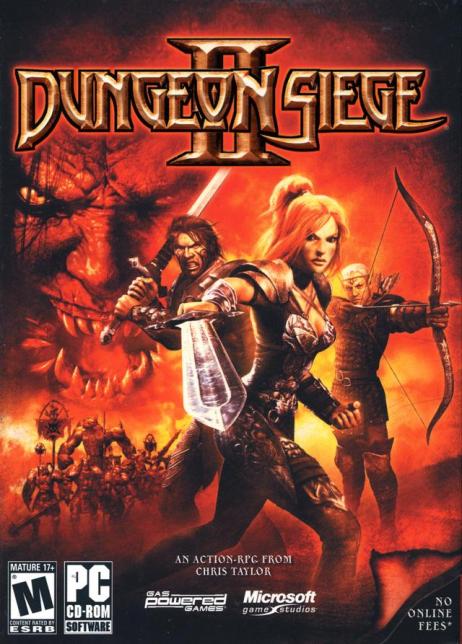Dungeon Siege II Review
-
Category: ReviewsHits: 22646

Article Index
Page 2 of 3
Enchanting is new, too or rather, it's new to DS2, but came first from the Diablo series, and then to Divine Divinity. In this game, you get a suitable merchant to take an enchantable object (weapons, armor, even spellbooks), and the reagents that will improve it. Unlike the new skill tree and powers, however, this feature isn't particularly well balanced. Enchantable items aren't found until well into the game, by which time you'll already have acquired plenty of randomly distributed combat treasure with far better statistics. As randomized loot improves as your party members level, so you'll discover more powerful reagents only after you've acquired items that were every bit as good. And without having to pay a fee to an enchanter, too. You'll also be able to teleport back to a main city, using a special spell, anytime during the game. In fact, if you quit the game and reload, you'll find your party has been moved out of the field and into a city, whether you wanted that to happen, or not. Judging from the fact that the latest (1.2) patch doesn't address this, it wasn't evidently a bug, but a feature. That may be, but it's annoying, regardless. If you just have a few minutes to play on several successive occasions, you'll be frustrated by having to retrace your party's steps before you can resume their progress barring the use of teleport stations, which aren't found every five minutes. Fair warning.
The idea of fleshing out party members with their own quests and comments (some of which are randomly displayed once, or related to specific events) is good; look at what Baldur's Gate II made of it, with great writing and excellent voice acting. Unfortunately, the character writing in DS2 is poor, unfocused, and clichéd, while the voice acting is often nearly as bad. Someone at Gas-Powered Games should do an analysis of what made the party NPCs in BG2 or KotoR2 so compelling: the distinctive wit of one, the unexpected depths of a second, the gradual revelation of evil rotting away a third and how these traits were implemented in comments and actions.
The pet situation leaves me a lot more upbeat. In the original DS, you could purchase multiple mules that couldn't fight, but quietly lugged around a lot of inventory. For some players this was great, but others complained about having to reposition the stupid beasts for each battle, and the wait before they'd rejoin the party afterwards. It got redundant long before the game's end, and there was even talk among some gamers of finding programming ways to kill the things and make roasts or stews out of the results.
In DS2, mules can kick. Can they ever; for while the mule does carry a great deal, its kick makes it an effective melee-based member of your party during combat. Nor are mules the only pets you can purchase. There are nine kinds of pets in all, though all aren't available until midway through the third and final (act) of the game. These include scorpion queens, dark naiads, and lap dragons, to name but a few. Each has its form of attack, and can be fed items you acquire to help it gradually grow. (The kind of items you feed them determine one of the stats they are most likely to improve when they reach the next growth stage.) Purchased as babies, they pass through juvenile, adolescent, young adult and mature stages, acquiring additional attributes, upgrades, and stat bonuses. At the juvenile level, each pet type gets a unique power; so that lap dragons, for example, can allow all party members to do greatly increased damage for 20 seconds. (These powers need to recharge after use, too.) And when they finally reach maturity, each pet receives an (emanation,) an extra power that remains permanently in effect. I was particularly fond of the dire wolf's emanation, which reflects 60% of the physical damage your party takes (provided they remain in a 4-meter radius of the beast) back at attackers.
What's Not New, But Should Be
Well, linearity. There are now a lot more missions your party can take on at any given time, but the game still pushes you forward down very narrow pathways to your goals, where just by chance all quests can be gradually solved, usually in a specific order. That sense of go-anywhere, do-anything, which was part of such series as Elder Scrolls, Might and Magic, Ultima, and Wizardry, is completely missing. You can veer off a given path in DS2 but only a very short distance. And you may find a cave if you do so, but again, whatever you accomplish will simply be part of the narrow path on the way to something else.


